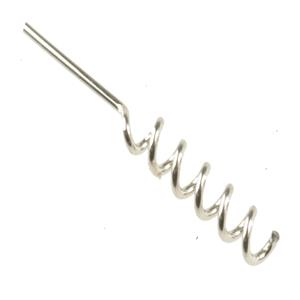The uses of wire forms in construction
Contents |
Introduction
Springs and wire forms are important within a wide range of industries. They are one of the most versatile parts within a range of products and can be designed and manufactured in an array of materials depending on specification.
Wire forms are wires that have been bent into a specific shape to fulfil a purpose, one commonly recognised wire form is the spring. Wire forms can be found in almost every industry, including:
- Agricultural
- Construction
- HVAC
- Injection moulding
- Aerospace
- Automotive
- Electronics
- Medical devices
- Petroleum
What are wire forms?
Wire forms are used for a wide array of applications, most commonly headsets and computer brace devices.
Wire forms can be manipulated into certain shapes, sizes and configured to fit the need of any design. They can be made in simple beams or a cantilever design. They can be made in coils or springs using various thicknesses or small rings of differing diameters.
Manufacturers of wire forms can custom make forms to suit the requirements of a task using computer engineering. The wire used within a wire form can be made of any suitable metal, varying on the specific need, such as; stainless steel, copper, or aluminium.
Common uses of wire forms
- Battery contacts: One of the most common applications for wire forms. Battery contacts are designed to have a spiral spring with a leg which can later be welded into a base. This type of application requires a nickel material.
- Mousetraps and safety pins: Wire forms can be found in this common household item. The front section of a mouse trap is a prime example of a common wire form design. A similar design is used for safety pins.
- Large wire applications: A common larger wire application is wire handles. Handles can be manufactured with differing wire sizes that are designed to slip into a hole at either end with a shaped handle.
- Light fixtures: The lighting industry is one of the most common sectors to use wire forms due to their durability and tolerance. Simple wire forms are designed to safely hold a lighting fixture in place.
- Electrical applications: Wire forms are used in a variety of electrical applications. Wire forms are bent into clips that are used to hold electrical wires in place, coated in tin plated copper.
- Hooks: These are used as a point of connection between two parts or components. The open end of the hook allows another item to be connected or suspended by fitting the second object around this point.
Uses within construction
Within construction, wire forms are most commonly used for equipment. Wire forms are created and designed for power tools and hand tools that can withstand the tight tolerances this type of equipment experiences. Wire forms follow a detailed manufacturing process, requiring exacting precision.
Manufacture
Wire forms are created and manufactured through these quick steps:
- Wire is fed through a machine to the bending head.
- The teeth or swage are formed by passing the wire through a form.
- A machine unit is used to cut and roll the wire to the ideal length and diameter.
- The bending head takes over, giving the threaded hook its shape.
Torsional, compression and extension are the three main types of wire form springs.
Find out more
Related articles on Designing Buildings Wiki
- Key Qualities of Springs
- Using Springs in Construction to Prevent Disaster
- Compression springs
- Torsion Springs and Their Benefits
- Extension Springs
- Spotlight on Compression Springs
- The Difference Between Tension and Torsion Springs
- The Multiple Uses of Compression Springs
--European Springs and Pressings Ltd 17:02, 16 Apr 2018 (BST)
Featured articles and news
Infrastructure that connect the physical and digital domains.
Harnessing robotics and AI in challenging environments
The key to nuclear decommissioning and fusion engineering.
BSRIA announces Lisa Ashworth as new CEO
Tasked with furthering BSRIA’s impressive growth ambitions.
Public buildings get half a million energy efficiency boost
£557 million to switch to cleaner heating and save on energy.
CIOB launches pre-election manifesto
Outlining potential future policies for the next government.
Grenfell Tower Inquiry announcement
Phase 2 hearings come to a close and the final report due in September.
Progress from Parts L, F and O: A whitepaper, one year on.
A replicated study to understand the opinion of practitioners.
ECA announces new president 2024
Electrical engineer and business leader Stuart Smith.
A distinct type of countryside that should be celebrated.
Should Part O be extended to existing buildings?
EAC brands heatwave adaptation a missed opportunity.
Definition of Statutory in workplace and facilities management
Established by IWFM, BESA, CIBSE and BSRIA.
Tackling the transition from traditional heating systems
59% lack the necessary information and confidence to switch.
The general election and the construction industry
As PM, Rishi Sunak announces July 4 date for an election.
Eco apprenticeships continue help grow green workforce
A year after being recognised at the King's coronation.
Permitted development rights for agricultural buildings
The changes coming into effect as of May 21, 2024.























